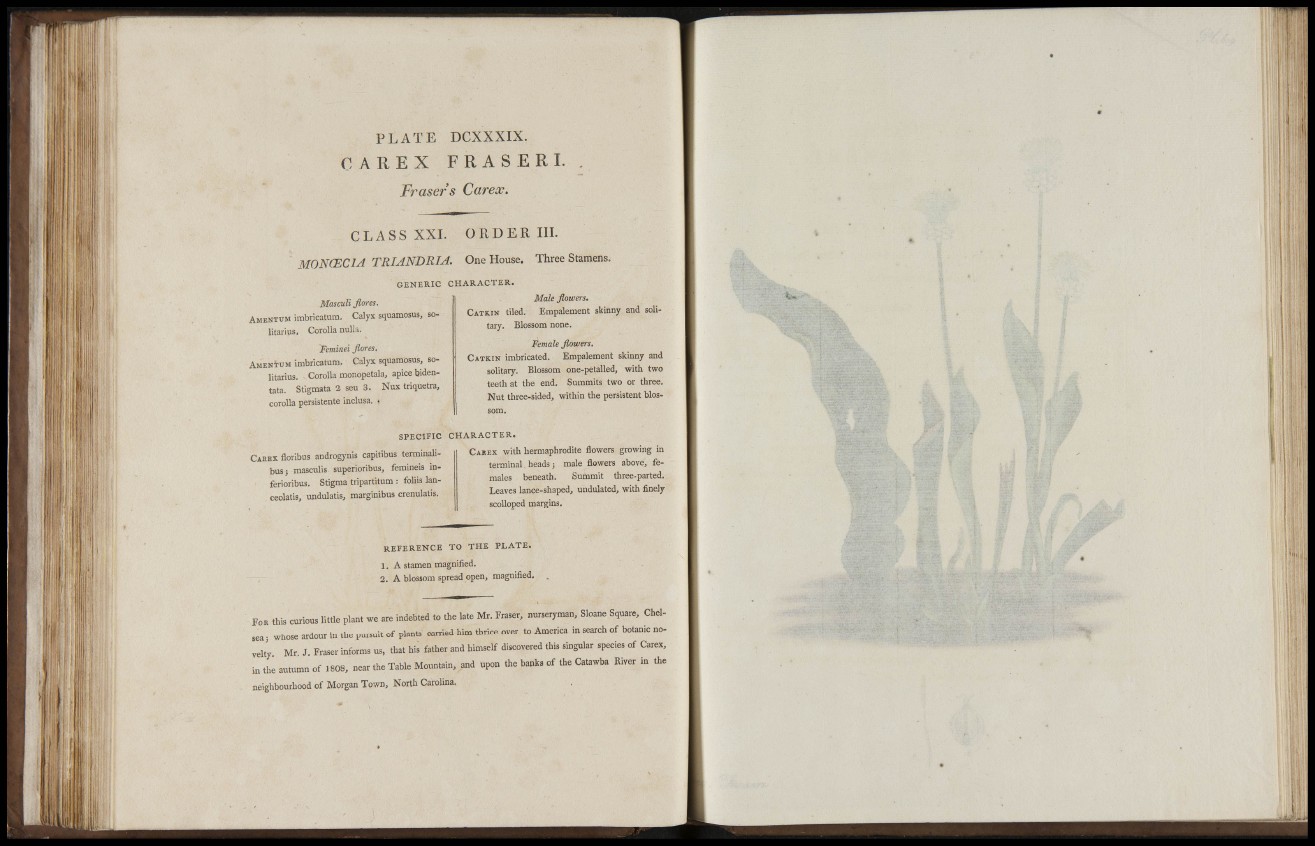
i
!fl! ,
P L A T E DCXXXIX.
C A R E X FRASERI.
Fräsers Car ex.
CLASS XXI. ORDER m.
MONCECIA TRIANDRIA. One House. Three Stamens.
GENERIC
Masculi flares.
A M E N T U M imbricatum. Calyx squamosus, solitarius.
Corolla nulls.
Feminei flares.
A M E N T U M imbricatum. Calyx squamosus, solitarius.
Corolla monopetala, apice bidentata.
Stigmata 2 seu 3. Nux triquetra,
corolla persistente inclusa, .
CHARACTER.
Male flowers.
C A T K I N tiled. Empalement skinny and solitary.
Blossom none.
Female flowers.
C A T K I N imbricated. Empalement skinny and
solitary. Blossom one-petalled, with two
teeth at the end. Summits two or three.
Nut three-sided, within the persistent blos-
SPECIFIC CHARACTER.
CAHEX floribus androgynis capitibus termiiialibus;
masculis superioribus, femineis inferioribus.
Stigma tripartitum : foliis lanceolatis,
undulatis, marginibus crenulatis.
C A R E X with hermaphrodite flowers growing in
terminal heads; male flowers above, females
beneath. Summit tliree-parted.
Leaves lance-shaped, undulated, with finely
scolloped margins.
REFERENCE TO THE PLATE.
1. A stamen magnified.
2. A blossom spread open, magnified.
FOR this curious little plant we are indebted to the late Mr. Eraser, nurseryman, Sloane Square, Chelsea
• whose ardour in the pursuit of plants carried him thrice over to America in search of botanic novelty
Mr J Eraser informs us, that his father and himself discovered this singular species of Carex,
in the aummn of 1808, near the Table Mountain, and upon the banks of the Catawba River in the
neighbourhood of Morgan Town, North Carolina.
y.
. 1 :
.S -'
i "
Ì :
i 'l -
'
I l > ^
H
ir.
i h